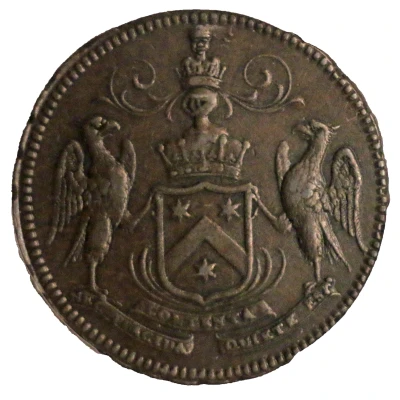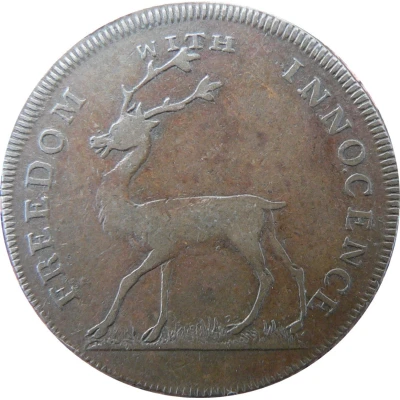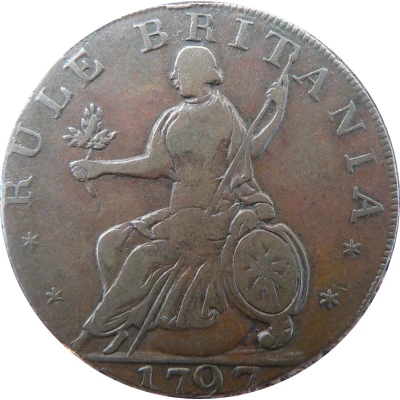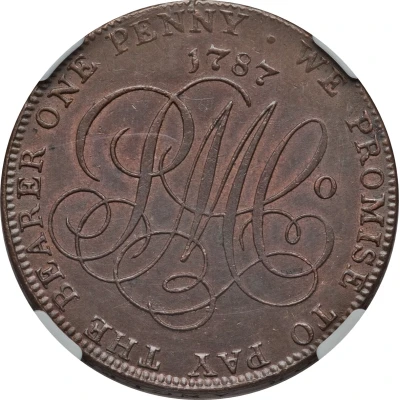


1 Penny Lancashire - Halsall / C. Mordaunt ND
| Copper | 16.4 g | 33 mm |
| Issuer | United Kingdom (United Kingdom, British Overseas Territories and Crown Dependencies) |
|---|---|
| King | George III (1760-1820) |
| Type | Token |
| Years | 1784-1787 |
| Value | 1 Penny (1⁄240) |
| Currency | Conder tokens (1787-1797) |
| Composition | Copper |
| Weight | 16.4 g |
| Diameter | 33 mm |
| Shape | Round |
| Technique | Milled |
| Demonetized | Yes |
| Updated | 2024-10-09 |
| Numista | N#281610 |
|---|---|
| Rarity index | 97% |
Reverse
Inscription and denomination.
Script: Latin
Lettering:
HALSALL
D
Edge
Engrailed
Comment
Possibly the first copper token of the industrial revolution and the first coins produced by Matthew Boulton, minted to pay the workers at Colonel Mordaunt’s cotton mill in Lancashire.Charles Mordaunt, born in 1730, was son of a nephew of the Earl of Peterborough. He set up a cotton mill at his estate at Halsall, but the lack of water to power it led him to talk to Boulton and Watt, of Soho, Birmingham, about supplying an engine. On 2nd December 1783, he also wrote to them asking for a die to stamp copper to pay his workforce, with the Earl of Peterborough’s Coat of Arms on the obverse, and Halsall on the reverse. The pennies were made as in the letter. Matthew Boulton did not have a mint at the time, but had been producing coin weights at Soho since 1775.
According to 'State of the Copper Coins in Circulation at Liverpool, Anno 1791' (Lancashire Record Office, Preston), the Halsall Penny was no longer in circulation by that time. Anglesey pennies had arrived in 1787, which were heavier and so more acceptable.
Interesting fact
One interesting fact about the Token 1 Penny (Lancashire - Halsall / C. Mordaunt) ND (1784-1787) coin is that it was issued during a time of currency shortages in the United Kingdom, particularly in rural areas. To address this issue, local businesses and merchants began issuing their own copper tokens, like this one, which were accepted as currency by the community. This coin is a rare example of a privately issued token that was used as a form of currency in the UK during the late 18th century.



